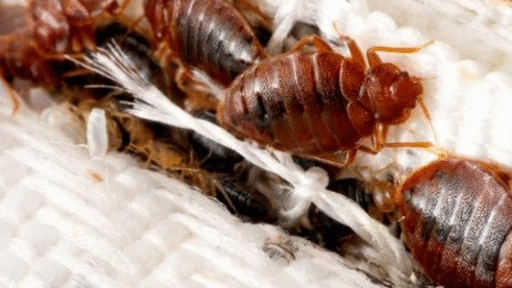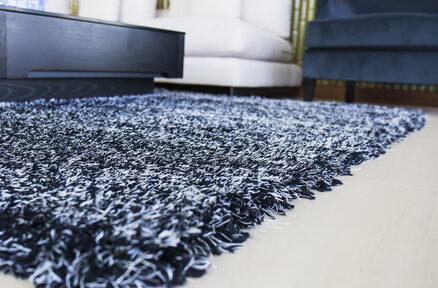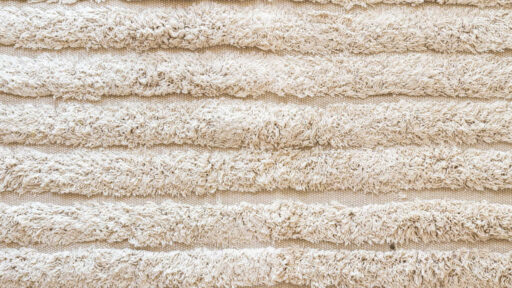Engineered wood floors offer the perfect blend of aesthetic appeal and durability, making them a popular choice for homeowners seeking the beauty of hardwood without the maintenance woes.
These stunning floors, composed of layers of real wood and high-quality plywood. They provide a versatile flooring option that can elevate any space.
Introduction to Engineered Wood Floors
Unlike traditional solid hardwood, engineered wood is crafted from multiple layers of wood veneer, bonded together to create a robust flooring solution that can withstand the challenges of everyday life.
The top layer, made from real hardwood, offers the natural warmth and elegance that wood floors are renowned for, while the underlying layers provide added stability and resistance to moisture fluctuations.
This innovative construction allows engineered wood to be installed in various environments where solid hardwood might falter. This areas such as such as basements or areas with high humidity.
Available in an array of finishes, colors, and styles, engineered wood floors can complement any interior decor, from rustic to contemporary, making them a versatile choice for homeowners looking to elevate their space.
However, while engineered wood floors boast remarkable resilience, they still require proper care and maintenance to keep them looking their best.
Benefits of Engineered Wood Flooring
One of the most significant advantages is its durability. Unlike traditional hardwood, engineered wood is constructed from multiple layers of real wood veneer, bonded together with a high-density core.
This layered design makes it more resistant to moisture and temperature fluctuations, making it an ideal choice for areas prone to humidity, such as basements or kitchens.
Another compelling benefit of engineered wood flooring is its aesthetic appeal. Available in a vast array of styles, finishes, and species, it can mimic the look of solid hardwood while offering enhanced stability.
Homeowners can achieve the rich, warm tones of oak, maple, or hickory, all while enjoying the added peace of mind that comes with a more resilient product.
Furthermore, installation of engineered wood floors is a breeze. They can be installed as floating floors, which means they can be laid over existing flooring without the need for nails or glue.
This convenience not only saves time and money but also allows for greater flexibility in design. Homeowners can easily change their flooring without the extensive labor typically associated with traditional hardwood installation.
Additionally, engineered wood is often more environmentally friendly than solid hardwood.
Many manufacturers utilize sustainable wood sources and production methods, minimizing their ecological footprint.
This makes engineered wood a great choice for environmentally conscious consumers looking to enhance their living spaces without compromising their values.
In summary, the benefits of engineered wood flooring extend far beyond mere aesthetics.
Its durability, ease of installation, and sustainable qualities make it a smart investment for homeowners looking to elevate their interiors while enjoying the practicality that modern living demands.
As we delve deeper into the care and maintenance of these beautiful floors, it’s essential to appreciate the inherent advantages that make engineered wood a favored choice among homeowners and designers alike.
Essential Tools and Supplies for Cleaning
With the right equipment, you can ensure that your floors remain in pristine condition, enhancing their longevity and beauty. Here’s a comprehensive list of essential items you’ll need for effective cleaning:
1. Soft-Bristle Broom
A soft-bristle broom is vital for sweeping away dust and debris without scratching the surface of your floors. Opt for a broom with fine bristles that can easily reach into the grooves and corners where dirt tends to accumulate.
2. Microfiber Mop
Microfiber mops are a must-have for damp cleaning. They are gentle on engineered wood while effectively trapping dirt and grime. Choose a mop with a removable, machine-washable pad for easy maintenance.
3. pH-Balanced Cleaner
Selecting the right cleaning solution is crucial. Look for a pH-balanced cleaner specifically formulated for engineered wood floors. Avoid harsh chemicals and ammonia-based products that can damage the finish over time.
4. Bucket
A clean bucket is essential for mixing your cleaning solution and water. Make sure it’s free of any residue from previous uses to avoid introducing unwanted substances to your floors.
5. Soft Cloths or Rags
Keep a stash of soft, lint-free cloths or rags handy for spot cleaning and drying. Microfiber cloths work particularly well as they are both absorbent and non-abrasive, ensuring your floors stay scratch-free.
6. Vacuum Cleaner with a Hard Floor Setting
A vacuum designed for hard floors with a soft brush or bare floor attachment is ideal for deep cleaning. This tool will help you pick up fine dust and larger debris without risking scratches.
7. Floor Mats
While not a cleaning tool per se, strategically placed floor mats at entryways can significantly reduce dirt and moisture entering your home, minimizing the frequency of deep cleaning needed.
Regular upkeep not only enhances the aesthetic of your space but also protects your investment, ensuring that your floors continue to shine and impress.
Daily Cleaning Routine: How to Keep Your Floors Tidy
Start your daily ritual by sweeping the floors with a soft-bristle broom or a microfiber dust mop. This simple act effectively removes dust, dirt, and debris that can accumulate and scratch the surface over time.
For those high-traffic areas, consider investing in a vacuum cleaner specifically designed for hard surfaces; just make sure it has a setting that allows it to avoid damaging your floor’s finish.
Next, when it comes to mopping, less is more. Use a damp mop with a cleaner specifically formulated for engineered wood floors. Avoid soaking the mop or using excessive water, as standing water can seep into the seams and cause warping or damage. Instead, lightly dampen the mop and clean in the direction of the grain for the best results.
Additionally, consider placing area rugs or mats at entry points to trap dirt and moisture before it reaches your floors. This not only preserves the beauty of your engineered wood but also provides a cozy touch to your home.
Finally, make it a habit to wipe up spills immediately. Engineered wood is resilient, but it’s always wise to address spills quickly to prevent any potential staining or damage.
With this simple daily cleaning routine, your engineered wood floors will remain tidy, allowing their natural beauty to shine through for years to come.
Deep Cleaning: When and How to Do It
Deep cleaning your engineered wood floors is an essential part of maintaining their beauty and longevity. Unlike traditional hardwood, engineered wood has a more durable surface finish, but it can still accumulate dirt, grime, and stains over time. Knowing when and how to perform a deep clean can help preserve the integrity of your floors while keeping them looking their best.
When to Deep Clean
It’s best to perform a deep clean every six to twelve months, depending on the amount of foot traffic your floors experience. High-traffic areas, such as hallways and living rooms, may require more frequent cleaning, while lower-traffic spaces might be fine with less regular attention. Additionally, after hosting a large gathering or following seasonal changes (like heavy rain or snow), a deep clean can help remove any accumulated dirt and restore your floors’ shine.
How to Deep Clean
1. Start with a Thorough Sweep or Vacuum
Before you get into the deep cleaning process, ensure that all loose dirt and debris are removed. Use a soft-bristle broom or a vacuum designed for hardwood floors to avoid scratches.
2. Choose the Right Cleaner
Select a pH-neutral cleaner specifically formulated for engineered wood floors. Avoid harsh chemicals, waxes, or oil-based products that can damage the finish.
3. Prepare Your Cleaning Solution
Mix the cleaner with water according to the manufacturer’s instructions. It’s crucial to use the right ratio to avoid leaving a residue.
4. Mop with Care
Use a microfiber mop or cloth to apply the cleaning solution. Ensure that the mop is damp, not soaking wet, as excess water can seep between the floorboards and cause damage. Work in small sections, moving the mop in the direction of the grain.
5. Spot Treat Stains
For tougher stains, such as wine or pet accidents, apply the cleaner directly to the stained area and let it sit for a few minutes before gently scrubbing with a soft cloth.
6. Rinse and Dry
After mopping, go over the floors with a separate damp mop or cloth to remove any remaining cleaning solution. Follow up by drying the floor with a clean, dry microfiber cloth to prevent water spots.
7. Regular Maintenance
Once your engineered wood floors are deep cleaned, maintain their luster by regularly dusting and sweeping. Place mats at entryways to reduce dirt and moisture from being tracked inside
Best Cleaning Products for Engineered Wood Floor
Here’s a guide to some of the best cleaning products specifically formulated for engineered wood, ensuring that your floors remain beautiful and resilient.
1. pH-Balanced Cleaners: Look for cleaners that are pH-balanced and specifically labeled for use on engineered wood. These products effectively remove dirt and grime without stripping away the protective finish. Brands like Bona and Murphy Oil Soap offer excellent options that are gentle yet effective.
2. Microfiber Mops: Instead of traditional mops that can push dirt around, opt for a microfiber mop. These mops trap dust and debris, preventing scratches while cleaning. Many microfiber mops come with reusable, washable pads, making them both eco-friendly and cost-effective.
3. Vinegar Solutions: A simple homemade solution of vinegar and water can work wonders for routine cleaning. Mix one cup of white vinegar with a gallon of warm water for a safe and effective cleaner. However, be sure to use this sparingly, as excessive vinegar can dull the finish over time.
4. Wood Floor Wipes: For quick clean-ups, consider using pre-moistened wood floor wipes. These wipes are convenient and formulated to clean without damaging the finish. Just be sure to choose a product that is free of harsh chemicals and additives.
5. Avoid Oil-Based Products: While some natural oil products may seem appealing, they can leave a slippery residue on engineered wood floors. Stick to water-based solutions to maintain a clean and safe surface.
6. Spot Cleaners: For stubborn stains, a specialized spot cleaner designed for engineered wood can be incredibly helpful. These products are formulated to target specific issues without harming the floor’s finish.



